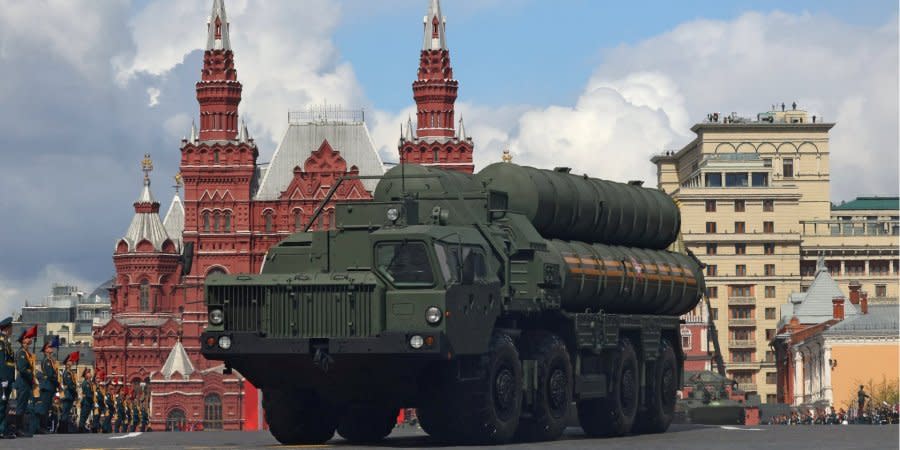Putin's attempts to abandon Western technologies have failed, Russian army will degrade

- Oops!Something went wrong.Please try again later.
Bloomberg said the report was a 20-page audit of Russia’s weapons industry compiled by the Prosecutor General's Office of Russia and dated April 2021.
The audit, a previously unknown document, shows that Russia has been running a program since 2019 with clearly defined goals to reduce the dependence of the defense industry on Western supplies until 2025.
The audit details attempts at setting up domestic production of components for a wide variety of weapons: from radars to submarines and anti-missile defense systems. But an internal review of the plan 10 months before the Russian invasion of Ukraine found that it remained unimplemented practically across the board.
According to the document, Moscow tried to carry out the import substitution of 177,058 components used in 278 types of military vehicles. In particular, it was planned to abandon 640 Ukrainian-made components.
Read also: About the death of Putin and his entire system
In 2020 alone, Russia hoped to find replacements for 18,047 components for 43 types of vehicles, but only 3,148 items were replaced. More than 230 million rubles were allocated for import substitution for components for Ka-226.80 multipurpose helicopters, although they were not even included in the state arms procurement program.
The production of analog electronic components from scratch didn’t even start: out of the planned 4,148 different components, none saw the light of day.
Attempts to replace Ukrainian components also failed in 2020, with 212 replacements on four types of equipment, while the goal was to make 260 replacements on 12 types of equipment.
In the same year, Moscow was able to arrange a strategic supply of spare parts for just over a third of the 7,244 projects it envisioned. Out of 484 projects aimed at changing supply chains, only five have made progress.
According to the document, only limited progress was made in 2020. Import substitution of a small amount of equipment for radio and laser reconnaissance was achieved.
Read also: What will happen in December, and why does Putin fear it?
The situation did not improve in 2021. Contracts worth billions of rubles with Russian companies and research institutes were broken, and due to the lack of proper control, foreign components were secretly used in the production of "Russian" counterparts.
The 2021 report also exposed the following failures:
For the Nudol’ anti-missile system – 1,548 tasks were set to replace components, but only 0.3% were completed, and import substitution of 30 components for domestic counterparts didn’t even begin.
For the Nebo-SVU and Nebo-UM long-range warning radar systems, work on replacing foreign components with domestic counterparts hasn’t begun. Plans regarding the import of spare parts have been 20% and 0.7% completed for the two systems respectively.
For the Murmansk-BN coastal electronic warfare complex at least 111 components were from EU and NATO countries and needed to be replaced, but the development of domestic equivalents hasn’t been started.
Read also: Russian invaders sending antiquated anti-aircraft guns to front
The import substitution goals were not met at all in relation to:
Nuclear submarines such as the Yasen and Akula types;
Tu-22M3 bombers, Su-34 fighter-bombers, as well as several types of rockets, including the 9M96 air defense guided rocket;
Il-96 aircraft (which Russian dictator Vladimir Putin uses to travel abroad);
class 22350 frigates;
Buk-M3 anti-aircraft missile systems;
Ka-52K attack helicopters;
Forpost UAVs.
According to a European official cited by Bloomberg, further degradation of Russian vehicles and its armed forces as a whole is expected. Some of Russia's most advanced weapons are entirely dependent on foreign components, including cruise missiles, TU-22 bombers, submarines, and air defense systems.
Russia is trying to replenish its troops, having suffered heavy losses in tanks and aircraft, as well as using up a significant part of its missile arsenal. A shortage of modern weapons has forced Russia to rely on Soviet-era designs, many of which are less accurate and less reliable, U.S. and European officials say.
Read also: Russian troop losses in Ukraine hit almost 65,000, says Ukraine’s General Staff
They believe that the Kremlin is unlikely to be able to continue massive missile strikes against Ukrainian infrastructure, despite Putin's threats to continue the escalation.
Read the original article on The New Voice of Ukraine

